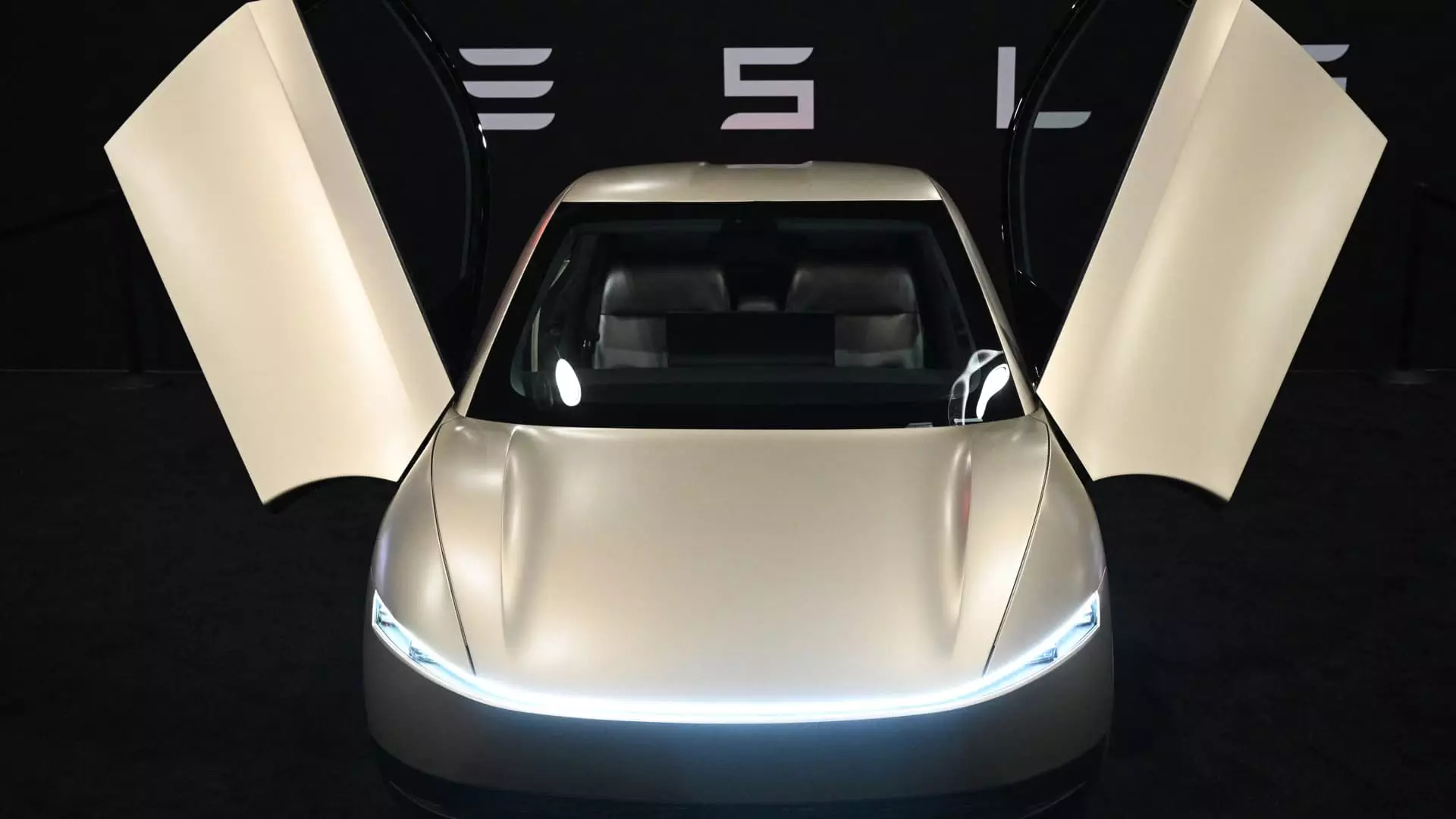Elon Musk has become a titan of innovation, yet his promises surrounding Tesla’s autonomous driving capabilities sometimes feel like wishful thinking rather than actionable reality. For nearly a decade, he has dangled the prospect of an entirely self-driving Tesla—essentially a robotaxi—just one software update away. But this long-gestating dream remains unfulfilled. The current offerings, characterized as Full Self-Driving (FSD) in the U.S. and rebranded as “intelligent assisted driving” in China, are not the panacea Musk envisioned. Instead, they remain largely semi-automated systems requiring active driver supervision. The disparity between the promise and the reality catalyzes skepticism, leaving many to wonder if Tesla’s so-called autonomous future is merely a mirage.
At its core, Musk’s FSD product serves more as a sophisticated driver-assistance technology than a true self-driving solution. It incorporates cameras and AI to navigate complex scenarios like highway merging and urban traffic congestion, but it still requires drivers to remain vigilant. The owner’s manuals clearly advise against complacency: “Keep your hands on the steering wheel at all times.” Yet, many users blithely disregard these warnings and put their faith in the technology, blurring the lines between trust and neglect.
The Unsafe Intersection of Innovation and Overconfidence
While it is easy to be captivated by the innovative flair surrounding Tesla, real safety concerns loom large. High-profile incidents involving injuries and fatalities while using the FSD feature have raised serious questions about whether this technology is street-ready. An important voice in this conversation comes from Guy Mangiamele, a professional test driver, who acknowledged that while the system “does a lot of things ‘amazingly well,'” it is not without peril. The reckless overconfidence exhibited by some Tesla drivers poses significant risks not just to themselves but to everyone sharing the road.
Furthermore, this cavalier attitude churns the wheels of public skepticism and anger. Incidents in which FSD was linked to collisions breed distrust, and even draw widespread condemnation that Tesla may struggle to overcome. Tesla’s attempts to foster a loyal customer base may be undermined by a perception that its technology is outpacing its safety measures. As the company grapples with reliability, the specter of regulatory scrutiny becomes an ever-looming threat.
The Deteriorating Public Image and Market Fallout
As if concerns over technology weren’t enough, Musk’s foray into political waters has added fuel to the fire. His visible support for polarizing political figures and controversial policies has resulted in public backlash, leading to boycotts and protests against Tesla. This politicization has become particularly detrimental in a marketplace where consumer sentiment is shifting, causing potential buyers to consider alternatives.
Recent data shows that existing Tesla owners are trading in their vehicles at an alarming rate, with stock performance reflecting this unsettling trend. Tesla’s shares plummeted by 36% within the first three months of 2025, marking its most significant downturn since 2022. The unveiling of new products and the anticipated launch of Musk’s long-touted robotaxi service should provide lifelines to investors, but the underlying sentiment has soured. There looms a palpable skepticism regarding whether any forthcoming service will meet the standards required for consumer trust.
Experts Weigh In: A Cautious Outlook for FSD
Amidst the tumult, automotive professionals paint a more restrained picture of the technology’s viability. Industry experts, including Sam Abuelsamid from Telemetry, remain doubtful that the FSD will be ready for unsupervised use anytime soon. Reports of unpredictable failures, even in ideal conditions, add a worrisome layer to the already complicated discussion surrounding Tesla’s FSD. The hesitation among experts indicates that until Tesla adequately addresses reliability and safety, the hopeful narrative around robotaxis risks becoming a cautionary tale.
With the prospect of a fully autonomous future remaining out of reach, questions are raised about Musk’s ability to deliver on his promises. The innovation inherent in the Tesla brand is undeniable, but until there is tangible progression toward making robotaxis a reality, one must wonder if this is merely another example of a technology outpacing its time—an alluring idea that may forever dwell in the land of dreams.
As consumers and investors alike weigh the costs and benefits of Tesla’s current trajectory, one thing becomes abundantly clear: the road to true autonomy is filled with more potholes than byways, and we have yet to see a clear path forward.

